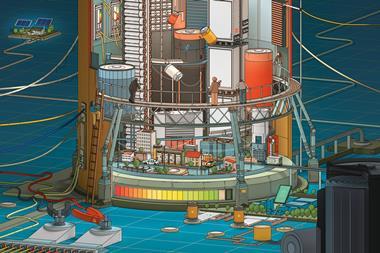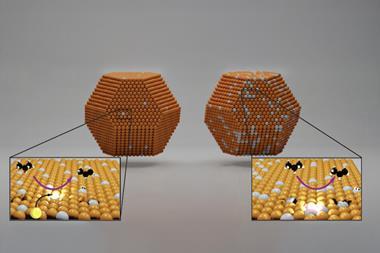A team of researchers has shown that paper industry waste can be transformed into a zinc–air battery.1 The battery, created from cellulose and lignin, exhibited a high power density and a wide operating temperature, while avoiding the longstanding issue of dendrite growth.
Zinc–air batteries are popular due to their low cost and high energy density. They are environmentally friendly and have a good safety profile, carrying none of the thermal runaway risks associated with lithium-ion batteries. These benefits facilitate their use in wearable electronics, such as hearing aids.2
The wood-based battery created by Lei Zhang of Qilu University of Technology in China and colleagues uses an iron cluster single atom catalyst as the air cathode and lignin from pulping black liquor as the carbon source. The study states that the single atom catalyst displays exceptional oxygen reduction reaction performance and the specific surface area exceeds that of most reported iron-based single atom catalysts. In contrast, traditional transition metal-based single atom catalysts often suffer from slow electron transfer during the oxygen reduction and oxygen evolution reactions.
The battery also contains a polyvinyl alcohol organohydrogel solid state electrolyte reinforced with cationic nanocellulose from pulped wood. Compared to conventional aqueous or alkaline hydrogel electrolytes, this cellulose-reinforced electrolyte showed improved flexibility and mechanical strength in addition to increased water retention capacity and ionic conductivity, which ensures continued stability and function. Moreover, conventional aqueous or alkaline hydrogel electrolytes exhibit poor electrolyte interface stability and dendrite growth, hindering long-term battery function. Functionalised solid-state electrolytes, such as this, can prevent zinc dendrite growth and improve the operational temperature range of the battery.
The study reports that the battery demonstrates ‘high power density and remarkable cycling stability’ over a wide temperature range (−60°C to 50°C). And that it surpasses most reported Zn–air batteries, highlighting their potential for clean energy storage and conversion applications.

‘What [they did] here is solve problems […] related to lithium–air rechargeable batteries,’ says Thomas Gregory, a battery expert and consultant at Borealis Technology Solutions, US. ‘One being the need for a low cost, high functioning electric catalyst for the air electrode. The other one being an electrolyte which resists dendrite penetration and suppresses dendrite growth at the zinc electrode. Those have been longstanding issues… and what [they have done] is address that using relatively low cost, abundant components.’
Beyond wearable electronics, there is a growing interest in using zinc–air batteries for larger scale energy storage, especially in more challenging environments. However, this is a small-scale study using a single source of wood, specifically eucalyptus. ‘How does this technology behave in a larger format?’ asks Gregory. ‘If they used a different wood species from a different source, would they behave the same electrochemically?’ These questions must be answered to enable larger scale applications and increase the pool of sustainable materials in the future.
References
1 J Chen et al, Energy Environ. Sci., 2024, DOI: 10.1039/d4ee01226g
2 P Tan et al, Energy Environ. Sci., 2017, 10, 2056 (DOI: 10.1039/c7ee01913k)

















No comments yet